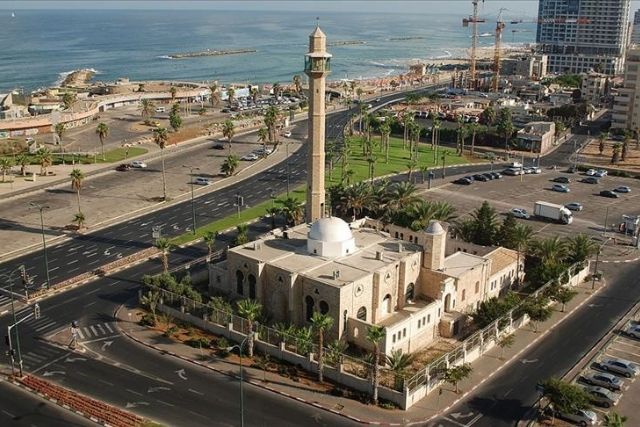Hasan Beg Mosque: Ottoman masterpiece in heart of Tel Aviv
Located in Israel’s capital, mosque ordered to be built by Ottoman Empire’s Jaffa Governor Hassan al-Basri Aljabi in 1914

TEL AVIV
Despite being attacked many times since the foundation of Israel, Hasan Beg Mosque, which was built during the Ottoman era in the Palestinian city of Jaffa, has survived the test of the time with its architectural beauty.
Located in the Neve Tzedek neighborhood in Tel Aviv, Israel's capital, the mosque was ordered to be built by the Ottoman Empire's Jaffa Governor Hasan al-Basri Aljabi in the then Manshiyya neighborhood in 1914.
While the Manshiyya neighborhood of Ottoman Palestine was completely destroyed by Zionist gangs that were part of founding elements of Israel, Hasan Beg Mosque was saved from demolition for fear of the potential harsh response from the international community.
Established in 1948 on a large part of historical Palestinian lands, the state of Israel administratively connects the city of Jaffa to the municipality of the capital Tel Aviv.
Israel included old Jaffa city under Tel Aviv's local administrative management and the doors of Hasan Beg Mosque were closed to Muslims.
Palestinians still recall that for so many years, the mosque was used as a barn and animal shelter and was a frequented place of drug addicts.
Having been cut off from its Muslim environment with later-built hostels and entertainment venues around the mosque, it was reopened to worship in the late 1970s by the Jaffa Muslim community.
Speaking to Anadolu Agency, the imam of Hasan Beg Mosque, Sheikh Ahmad Abu Ajwa, said Israel is trying to destroy the Arab-Islamic identity of the historical Palestinian lands.
"Nothing is left of the Manshiyya neighborhood except this mosque, which has witnessed history," he said, adding all of this happened after the Nakba (catastrophe), referring to the establishment of the Israeli state in 1948, when hundreds of thousands of Palestinians were displaced or fled their homes.
Stressing that the mosque was closed to worship right after the establishment of Israel, Abu Ajwa said: "The Hasan Beg Mosque in the Manshiyya neighborhood, where Palestinians were subjected to forced migration, was abandoned to its fate by Jewish gangs…and it was subjected to repeated attacks."
He noted that the mosque has a prayer area for approximately 3,000 people.
"Hasan Beg Mosque is literally an Ottoman masterpiece. Whoever looks at the structure of the mosque, from its entrance to its pulpit and mihrab, will see that it is a giant Ottoman work.
"However, all Palestinians, particularly the people of occupied Jerusalem, and our brothers and sisters in Turkey have been providing full support to this mosque," he added.
Turkey's Mirasimiz (Our Heritage) Association, which works on the preservation of Ottoman heritage in Jerusalem and its adjacent territories, in partnership with the Al-Aqsa Foundation, founded by Palestinian citizens of Israel, restored the east and northeast facades of the mosque and reconstructed the southeast wall of the mosque in accordance with Ottoman architecture in 2009.





